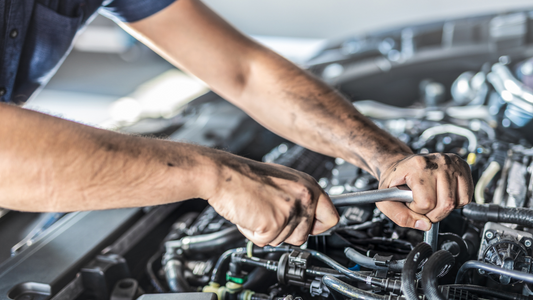Introduction.
There's nothing worse than being stuck on the side of the road with a flat tire. The good news is that most car problems can be avoided with routine maintenance—and if you're lucky, the problem can usually be fixed by simply rotating your tires. Taking proper care of your ride isn't just about saving time and money: it's also about keeping you and your family safe on the road. In this post, we'll explain what tire rotation actually is and explain why all drivers should get their tires rotated regularly.
The main difference between tire rotation and wheel alignment is that tire rotation includes the movement of tires around your car and wheel alignment involves checking and adjusting the suspension.
The main difference between tire rotation and wheel alignment is that tire rotation includes the movement of tires around your car, while wheel alignment involves checking and adjusting the suspension.
Tire rotation is a maintenance procedure that involves moving the tires around the wheel. This can help distribute wear evenly across all four tires and improve gas mileage by balancing the weight distribution of your vehicle.
However, if you want to check or adjust your suspension system (which could be damaged after an accident), then you'll need to get a wheel alignment instead. Wheel alignments are also important for proper tracking when going over bumps as well as cornering at high speeds—so it's important to get this done every so often!
Regularly maintaining your tires will help ensure that you stay safe on the road.
Tires are the only contact your car has with the road, and they're also the only thing that separates you from an unpredictable world of potholes and other cars. If anything is going to keep you safe on the road, it's these two things: a good set of tires and regular maintenance.
That said, there are plenty of reasons why regular tire maintenance is important—but there are also some misconceptions about what actually goes into maintaining them.
Your vehicle's tires should be rotated every 5,000 to 8,000 miles.
About every 5,000 to 8,000 miles, you should rotate your tires. This is a simple procedure that can help improve the life of your tires and also improve fuel economy. Tire rotation is recommended for all vehicles with directional or asymmetrical tread patterns. In most cases, no special tools are needed to perform this service—just an air pump and a torque wrench.
You should also have your wheels aligned at least once every two years or when you perform a new or major repair on your car.
It's important to know that wheel alignment is not the same as tire rotation. If you need to have your wheels aligned and it's been awhile since you last had these services performed, it will likely be a more expensive service than a simple tire rotation.
With that said, if you don't want to take the time or effort necessary for doing this yourself, there are many shops in our area who can do both at once for a reasonable price (although not necessarily cheap).
If you're planning on taking a trip this summer, it's a good idea to schedule a tire rotation before you depart.
If you're planning on taking a trip this summer, it's a good idea to schedule a tire rotation before you depart. Road trips are fun but can take their toll on your vehicle's tires. For example, if you drive from Florida to California and back—a distance of about 3,000 miles—your tires will endure more stress than normal with such long distances and changes in weather conditions. Tire rotations are necessary so that each set of four tires gets the same amount of wear and tear over time.
Tire rotations should be performed every 5,000 to 8,000 miles (8-12 months), or whenever your car goes through an oil change or other major service job done by the mechanic at Jiffy Lube® Service & Car Wash locations near me.* The rotation also helps ensure that your brakes aren't worn unevenly as well as ensuring they don't wear down faster than they should due to incorrect alignment settings on one side rather than both sides equally being used when slowing down from speed quickly like when approaching stop lights at intersections where traffic signals have already changed from red (stop) to green (go) for other drivers ahead who have already begun moving forward into their lanes after pulling up behind them waiting for them before proceeding into theirs once signaled by road signs indicating "STOP HERE ON RED" signs posted across intersections along roadways throughout America today!
Tire rotations don't cost much and can really save you time and money in the long run.
Tires wear out over time.
Tires are expensive, and they can cost hundreds or even thousands of dollars to replace. You can extend the life of your tires by rotating them regularly and keeping an eye out for any signs of wear. Rotating your tires means that you move each one from its starting position on the car (the front left) to a new spot in a different location on the vehicle (the rear right). Rotating your tires helps distribute wear evenly across all four wheels so that you don't have to replace them as quickly as if you didn't rotate them at all. Rotating tires regularly will save you money in the long run!
Conclusion.
It can be easy to forget about your car's tires, which is why we often recommend that people make it a habit to check their tire pressure every month or so. It’s also a good idea to have them rotated on a regular basis. If you’re planning on taking a trip this summer, make sure you schedule an appointment for tire maintenance before hitting the road!









